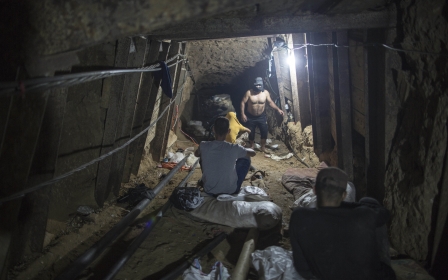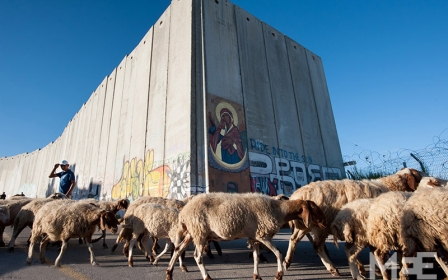Israel to build underground barrier around Gaza Strip

Israel plans to build an underground barrier around the besieged Gaza Strip, officials announced on Wednesday.
Defence Minister Moshe Yaalon said that the Israeli army would start the project soon.
The barrier will “prevent terrorists from using deep tunnels to try and penetrate the wall,” Israeli Army Radio reported.
Last month, the Israeli Ministry of Defence announced that it had completed construction of a "smart" security fence around 12 Israeli communities located near the border with Gaza.
During last year's Israeli offensive on Gaza, the al-Qassam Brigades, the armed wing of Palestinian Hamas movement that governs Gaza, used underground tunnels to attack Israeli military targets near the border.
According to the Israeli army, the al-Qassam Brigades used tunnels on four separate occasions during the conflict to infiltrate Israeli territory, where its fighters succeeded in killing 12 Israeli soldiers.
The war lasted for 51 days during July and August of last year, and over 2,200 Palestinians, the majority of them civilians, were killed in Israeli attacks.
Since the beginning of the siege on Gaza in 2007, Palestinians have used a network of hundreds of tunnels to smuggle everything from food to livestock to weapons, using tunnels which link the Strip to Egypt. The nearly decade-long siege has at times prevented the entry of basic life necessities such as food and medicine.
Earlier in 2015 the Egyptian army said it had destroyed the openings of more than 500 underground tunnels during a six-month military operation on its eastern borders with the Gaza Strip.
Egypt has further exacerbated the situation by flooding the tunnels with sea water that has leaked into the aquifer, damaging the ground structure and contaminating the drinking water.
Middle East Eye propose une couverture et une analyse indépendantes et incomparables du Moyen-Orient, de l’Afrique du Nord et d’autres régions du monde. Pour en savoir plus sur la reprise de ce contenu et les frais qui s’appliquent, veuillez remplir ce formulaire [en anglais]. Pour en savoir plus sur MEE, cliquez ici [en anglais].




